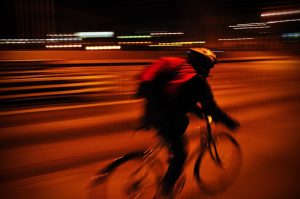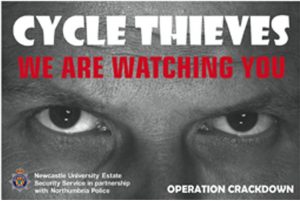National Bike Month comes to a close
 National Bike Month which takes place every May, ends this week. To celebrate a month of cycling focused activities, EveryONE is highlighting some recent cycling research published in PLOS ONE.
National Bike Month which takes place every May, ends this week. To celebrate a month of cycling focused activities, EveryONE is highlighting some recent cycling research published in PLOS ONE.
As biking becomes ever more popular and bike-sharing programs expand, such as in New York City last weekend, cycling injuries and fatalities may increase as well. Although most people acknowledge the utility of wearing a helmet, encouraging cyclists to actually use them can be difficult. A study examining the efficacy of several helmet-promotion measures showed that attitudes about helmets making people “look ridiculous” or “old-fashioned” can be hard to counter. Even providing cyclists with free helmet was only mildly successfully in convincing non-helmet users to wear one. The most effective measures included pressure from family or friends to wear it, as well as shifting the safety dialogue from helmets as head and brain protection to promoting helmets as “face-protecting” devices. So folks, as you get on your bikes this weekend, protect your face and wear a helmet.
Aesthetics aside, competitive cyclists are frequently seeking ways to improve their performance and speed recovery. Compression sportswear, from sleeves to knee-high socks to shorts, is one current performance-enhancing trend. These products tout improved arterial blood flow from the compression as a way to increase speed, reduce chances of injury and shorten recovery time. A pair of compression cycling shorts can be quite expensive though, so before you go purchasing your way to shorter race times, evidence in recent research indicates that claims of their efficacy may be overreaching. In fact, a study on athletes wearing compression shorts showed blood flow to the muscle actually decreased, contradicting many of the claims from these sportswear companies. Getting faster may just require more time in the saddle.
Theft of bikes is a persistent issue facing casual and competitive cyclists alike, but there’s some good news on this front: recent research showed a relatively simple deterrent to be surprisingly effective. The study found a 62% decrease in bicycle theft in locations where an ominous sign showing a person’s eyes and the words “Cycle Thieves We Are Watching You” (below) was posted above the bike racks. Theft in locations without these posters rose.
For more research on bikes and cycling performance, visit PLOS ONE.
Citation: Constant A, Messiah A, Felonneau M-L, Lagarde E (2012) Investigating Helmet Promotion for Cyclists: Results from a Randomised Study with Observation of Behaviour, Using a Semi-Automatic Video System. PLoS ONE 7(2): e31651. doi:10.1371/journal.pone.0031651
Sperlich B, Born D-P, Kaskinoro K, Kalliokoski KK, Laaksonen MS (2013) Squeezing the Muscle: Compression Clothing and Muscle Metabolism during Recovery from High Intensity Exercise. PLoS ONE 8(4): e60923. doi:10.1371/journal.pone.0060923
Nettle D, Nott K, Bateson M (2012) ‘Cycle Thieves, We Are Watching You’: Impact of a Simple Signage Intervention against Bicycle Theft. PLoS ONE 7(12): e51738. doi:10.1371/journal.pone.0051738
Image Credits: cyclist by jesse.millan, poster from pone.0051738

